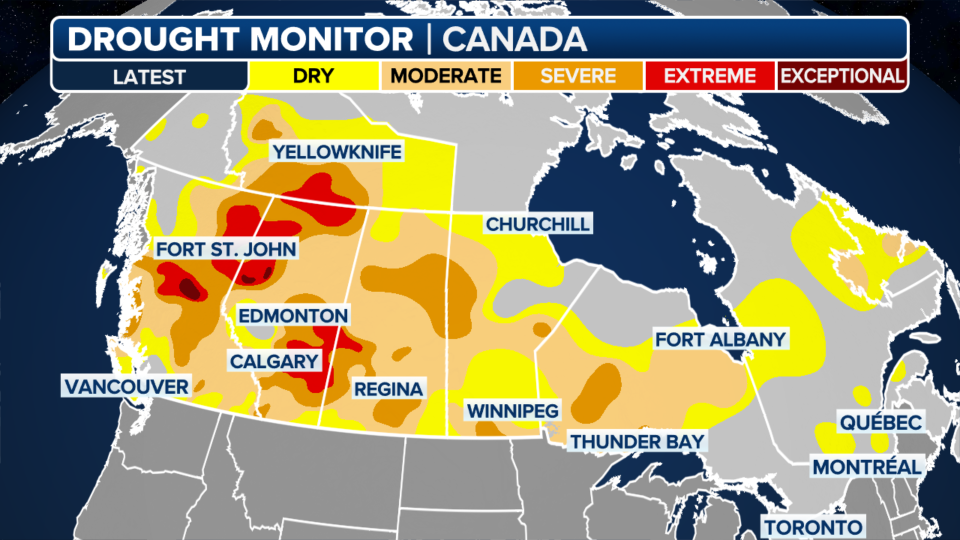Raging fires in Mexico send smoke over southern US, reducing air quality readings from Texas to Florida
MEXICO CITY – A combination of wildfires, agricultural burns and a persistent wind flow out of the south is causing air quality issues along the Gulf Coast from Texas through Florida with high-level haze occasionally impacting visibilities.
Firefighters in Mexico and countries in Central America are fighting dozens of wildfires that are producing large plumes of smoke, which are visible on satellite imagery.
On Friday, Mexico’s national forest commission reported 168 active wildfires have burned over a quarter of a million acres, and there is no apparent relief in sight.
The North American Drought Monitor reports a staggering 82% of the country is unusually dry, with nearly 70% under drought conditions.
Drought statuses that are considered to be extreme or exceptional lead to widespread crop losses, water shortages and make vegetation conducive for fires.
A recent national pickle shortage in the U.S. was tied directly to poor agricultural conditions in Mexico, with the possibility that other fruits and vegetables might suffer a similar fate over the next several months.
Air quality observation sites around Brownsville and South Texas have had some of the poorest readings in the nation this week, with levels dipping into the ‘unhealthy’ range, but according to the local National Weather Service, the region is in a unique situation.
"There are three reasons for that. One, of course, is the burning," the NWS stated. "But number two is the persistence of the southerly flow. It is part of the same pattern, producing a lot of the flooding and windstorms in East and Southeast Texas. The other thing is, with the very warm water temperatures of the eastern half of the Pacific and the southwestern Gulf, it’s producing additional moisture that particles to condense onto."
NWS meteorologists warned that not all the smoke that is being observed in the Lone Star State are from wildfires. Yearly agricultural burns are also taking place, with farmers preparing fields for future crops.
Forecast models show off-and-on plumes of smoke impacting communities around the Gulf Coast through the weekend, but the FOX Forecast Center warns that impacts are entirely dependent on local weather conditions and, for most, will just be a phenomenon that is barely visible in the sky.
Dozens of large wildfires burning in Canada have already triggered air quality alerts to be issued for more than a dozen states as the fire season picks up from where last year left off.
In 2023, more than 45 million acres burned during a record-breaking fire season, with Canadian officials warning that 2024 could be another extreme year.
The largest blazes were burning in the provinces of British Columbia and Alberta and, depending on the day’s wind direction, occasionally sending plumes of smoke toward the northern U.S.
Similar to Mexico and Central America, an El Niño pattern regime caused precipitation deficits in Canada over the winter, leading to severe and extreme drought levels across large parts of the country.
Canada’s wildfire season typically begins in May and runs through September, but most blazes are reported in June and July.

Original article source: Raging fires in Mexico send smoke over southern US, reducing air quality readings from Texas to Florida

